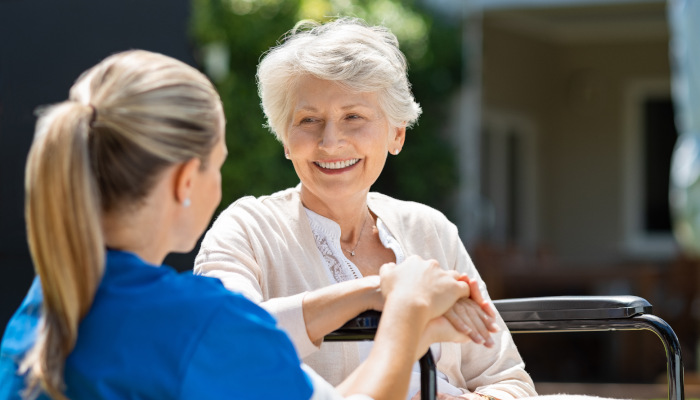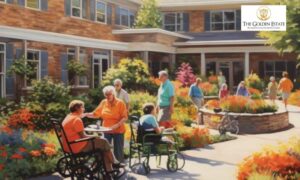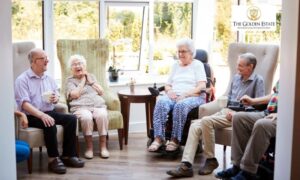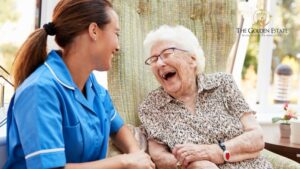When examining the many services offered by various senior living facilities, you have undoubtedly encountered the term “assisted living levels of care” while searching for an assisted living community for yourself or a loved one.
However, what does the term Elderly Care Home mean?
The phrase “levels of care” for assisted living often describes the degree of help required for both managing a person’s health and activities of daily living (ADLs).
- Activities of Daily Living, or ADLs, are those jobs that are vital to a person’s daily functioning. Examples of activities of daily life include things like eating, using the lavatory, taking a bath or shower, and getting dressed.
- Medical requirements may vary depending on the person’s ability to self-manage chronic diseases and prescription medicines, or whether support from a carer is required.
The degree of care provided in assisted living is frequently based on a person’s medical requirements as well as their capacity to conduct Activities of Daily Living (ADLs). One’s needs for care vary along with changes in their functional skills and state of health. If a person is capable of doing their ADLs on their own, they might just need a reduced level of care. However, greater degrees of care, such as retirement communities, skilled assisted living facilities, or full-time caring, may be necessary for persons with more complicated medical requirements or impaired ADL capacities. This dynamic interaction between ADLs and medical demands is essential for customizing healthcare services to meet each person’s specific needs and guarantee they get the right amount of support and assistance.
To help you select the finest elderly care home or other senior living community for your requirements, let’s examine some of the characteristics that determine the type of care you or your loved one may require.
ASSISTED LIVING LEVELS OF CARE BY INDIVIDUAL ACTIVITY
Since each elderly care home resident is different, they will all need varying degrees of support. You can determine whether the resident requires assistance with any of the following tasks, as well as the kind and quantity of assistance needed, by using the daily living checklist activities.
- Taking a bath. For certain residents, it’s only a reminder to take a bath or shower at the appropriate time. While some people can wash by themselves, others require assistance if they are in danger of falling. Others might require assistance from one or more carers when taking a bath.
- Getting dressed. Different amounts of assistance may be needed by residents to get dressed. A resident may have the motor skills to button and zip items, but not the dexterity to put garments on. Someone else could want assistance selecting appropriate attire based on the event or climate.
- Preparing oneself. This involves grooming oneself at the elderly care home, such as shaving, fixing hair, and cleaning teeth. For example, if a person has limited shoulder range of motion, combing their hair could be challenging and need assistance from a carer.
- Mobility. Walking, using mobility aids, transferring, and standing are all included in this. A patient who can independently utilize a wheelchair or cane may, in some circumstances, require less care than a different resident who requires assistance standing or walking.
- Transparency. This involves having the self-management skills necessary to take care of the illness on one’s own, such as changing one’s protective pants. Individuals who need carer assistance are categorized as having a greater degree of care.
- Consuming food. Some people can feed themselves, but they require assistance chopping their food. Some people need a carer present as a safety measure because they may be at risk of choking. A caretaker may be necessary to assist someone with restricted upper body function with eating.
- Drugs. Can the resident take and fill prescriptions on their own? Certain residents can experience difficulties opening prescription bottles or giving themselves injections. While some people can manage their medicine on their own, others might need daily reminders to ensure they are taking their prescriptions at the appropriate times and at the right amount.
- How many nannies are required? While residents with numerous disabilities should select a facility that offers a greater level of care from a team of carers, individuals who just require assistance with one ADL are classed as needing fewer carers and a lesser level of care.
OVERALL LEVEL OF CARE NEEDED
- You can evaluate each resident’s specific ADLs and medical needs before determining the total level of care required for an elderly care home.
Level 1: Basic degree of assistance. Although this resident lives generally independently, she could require reminders to do ADLs. Some jobs might just need a little amount of oversight or help to guarantee that they are completed safely and correctly. - Level 2: Moderate to intermediate care. ADLs such as eating oneself may be performed independently by the resident, while other ADLs, like dressing oneself, may require assistance.
- Level 3: Elevated standard of care. Due to their limitations, this person needs a high degree of support from several carers to do several ADLs.
Would you like more information about the care levels required for assisted living so that you or a loved one may live the life you deserve? Do you need assistance finding a place to live that provides the right kind of care? At The Golden Estate, have a conversation. At our elderly care home, we’ll give details regarding the features and services offered by our kind staff members.






